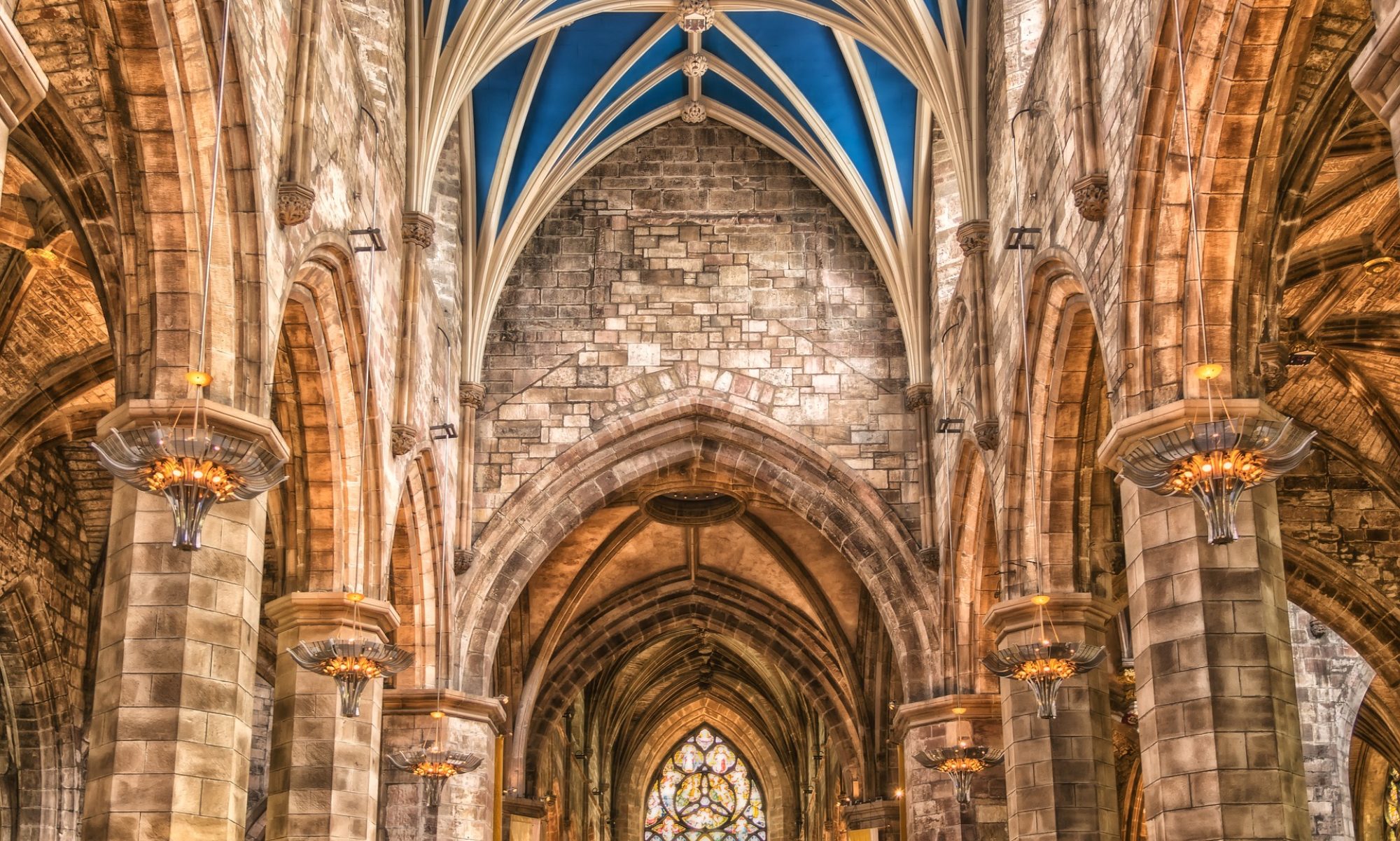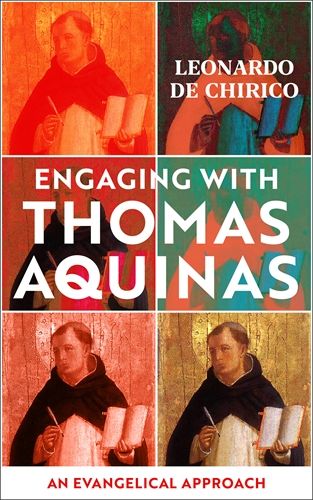Thomas Aquinas died on March 7, 1274, exactly 750 years ago. This year and next (the eighth centenary of his birth) will be special occasions to reckon with his legacy. Indeed, there will be conferences, publications, and various initiatives worldwide.
To approach Thomas Aquinas (1225-1274) is to encounter one of the all-time giants of theology. Thomas is second only to Augustine in his influence on Western Christianity. More specifically, for centuries, Roman Catholicism has regarded Thomas as its champion, the highest, most resounding, most complete voice of Roman Catholic thinking and believing. Canonized by John XXII as early as 1323 only forty-nine years after his death, he was proclaimed a Doctor of the Church by Pius V in 1567 as the quintessential Catholic theologian whose thinking would defeat the Reformation. During the Council of Trent, the Summa theologiae was symbolically placed next to the Bible as evidence of its primary importance in formulating the Tridentine decrees and canons against justification by faith alone. In the seventeenth century, Thomas was considered the defender of the Catholic theological system by Robert Bellarmine, the greatest anti-Protestant controversialist who influenced entire generations of Roman Catholic apologists.
In 1879, Pope Leo XIII issued the encyclical Aeterni Patris, where he pointed to Thomas as the highest expression of philosophical and theological science in a climate marked by bitter confrontation with modern thought. The Second Vatican Council (1962-1965) stipulated that the formation of priests should have Thomas as the supreme guide in their studies (Optatam Totius, no. 17).
In more recent years, Paul VI (Lumen ecclesiae, 1974) and John Paul II (Fides et ratio, 1998) expressed deferential appreciation by pointing to Thomas as a “master of thought and model of the right way of doing theology” (FR, no. 43). This is to say that the Church of Rome has appropriated Thomas persistently and convincedly, elevating him to the Roman Catholic theologian par excellence. Moreover, Thomas is the recognized authority behind many unbiblical developments in medieval and modern Roman Catholicism, from Trent to Vatican I and II. One cannot fail to see the distorting elements at the heart of his system that have generated departures, rather than approaches, to biblical faith.
In recent decades and with increasing intensification, Thomas has instead been brought closer to a Protestant theological sensibility. Today, there seems to be a widespread perception that Thomas is no longer a heritage for Roman Catholics and that evangelicals can and should learn much from Thomas. Protestant theologians (from Peter Martyr Vermigli to Herman Bavinck via Francis Turrettini) generally exercised theological discernment that enabled them to appreciate the aspects of his theology that fell within the groove of biblical and orthodox faith and to reject his teaching where it conflicted with Scripture. In other words, they did not espouse the Thomist system as such (including its metaphysics and epistemology). Still, they broke it down into its parts as far as possible to do so with integrity and used it “eclectically.” Their attention to Thomas was more methodological than substantive. They merely borrowed some of his ideas but did not assign them architectural importance.
While certain sectors of evangelical theology know a genuine flirtation with the thought of Thomas, it may be useful to recall the lesson of a great Reformed theologian like Herman Bavinck (1854-1921). As with other ancient and medieval church fathers, Bavinck adopts an approach to Thomas that has been described as “eclectic,” that is, free to pick up insights and theses from him in awareness of his being on the other side (the Roman Catholic side) from the foundations of evangelical theology. Within a theology anchored in Scripture, Bavinck reads Thomas with intelligence and spiritual acumen, using various elements without espousing his system. For Bavinck, grace does not elevate or perfect nature but redeems it from sin. This eclecticism is also how the Reformers and Reformed and Lutheran scholastics read Thomas, sometimes endorsing his positions and arguments but being clear that the framework of Thomas’ theology built on the nature-grace motif was distinct and distant from the evangelical faith.
This is not to reject Thomas as a quintessentially toxic theologian to be avoided at all costs, nor to elevate him as a champion of Christian orthodoxy, but to regard him as an indispensable interlocutor in the history of Christian thought to be read critically and generously in light of the principle of “sola Scriptura” that the Reformation called to the attention of the whole church.
P.S. Let me point out my upcoming book (May 2024) that can help evangelical discernment related to Thomas: Engaging with Thomas Aquinas. An Evangelical Approach (London, Apollos, 2024).
226. If the Pope thinks that Rome is a “mission field.”
Evangelicals have known for centuries that Rome is a “mission field.” It is no coincidence that as soon as the breach of Porta Pia opened in 1870 (when Rome was liberated from papal power and the Pontifical State ended), Bibles and Christian tracts were immediately smuggled in to further the evangelization of the city. Despite being considered the cradle of Christianity, Rome had experienced a somewhat tyrannical religious monopoly by Roman Catholicism over the centuries. Still, it could not be said to be an evangelized city. Very religious, yes, but Christian, no. Rome was a mission field because it prevented the free circulation of God’s Word in the vernacular language and suppressed any attempts to bring about a biblical reformation.
For this reason, after 1870, evangelism and church planting activities were initiated by evangelicals surrounded by suspicion and, at times, opposition. This continues to this day. By evangelical standards, Rome was and is still a mission field. With around 100 evangelical churches and a population of 4 million, it is indeed a mission field.
Since 1870, much water has passed under the bridges of the river Tiber. Today, even the Roman Catholic pope says Rome is “a mission field.” Meeting with the Roman Catholic clergy on 13th January, Francis said just that: the heart of Roman Catholicism, the seat of the papacy, the center of Roman Catholicism, the city that Popes have claimed their own is a “mission field.”
What does that mean? The challenges of secularization, disengagement, and abandonment of religious practice are putting increasing pressure on the Roman Catholic Church right here in the eternal city. Accustomed to imposing its primacy on consciences for centuries, now that its authority structure and the social imposition of customs no longer work automatically, even Roman Catholicism in Rome is in a crisis of numbers and participation. Masses (with exceptions) are semi-deserted, and parishes (with exceptions) are perhaps attended for the services they offer to the young or the poor, but certainly are no longer known to be places of spirituality (e.g. prayer, catechesis). Much of the Roman population is not “active” in Catholic practices.
Rome is still religious in its “hardware” but less and less so in its “software.” Everything in Rome speaks of the established and pervasive presence of the Roman Catholic Church (palaces, institutions, churches, the Vatican). Still, it is beginning to perceive itself as a presence needing self-defense and promotion. So, the pope, who is the Roman Catholic bishop of Rome, says that the city must be considered as a mission field to be reached with the “new evangelization” by an “outgoing” church, the two passwords that he has been using since the 2013 programmatic document “The Joy of the Gospel.”
Although it may appear so, what Pope Francis said is not a new thing. Back in 1974 (exactly 50 years ago), Cardinal Poletti, then the pope’s vicar for the city of Rome, said that Rome was a “mission field.” It caused a stir then. Ten years after celebrating the splendors of the Second Vatican Council, the church began to see Rome not so much as “our” city but as a place to be reached.
When Francis says Rome is a “mission field,” one must also see the other side of the coin. On 4th January, he met with the Mayor of Rome, Roberto Gualtieri, and the President of the Lazio Region, Francesco Rocca—something that does not happen for any other faith community. The city’s two highest political and administrative authorities are not generally received “in audience” by religious leaders in their offices. However, the pope does it frequently, and they go to him with deferential attitudes. He is a top political figure.
Four days later on 8th January, the president of the Italian Catholic Bishops Conference, Cardinal Matteo Zuppi, signed the hiring of 6,500 new religion teachers (chosen by Roman Catholic bishops and paid for by Italian taxpayers) with the Italian government. This, too, is not a practice of a “mission field” but of a country enslaved to a religious denomination. A mirror of an unjust privilege is the fact that in public, state-funded schools, Roman Catholic teaching is the only option available for students and is paid for by the state.
And then, on Sunday evening, 14th January, Pope Francis was interviewed live on prime-time: an hour-long, almost kneeling interview by anchorman Fabio Fazio on “Che tempo che fa” show. It was on this program that, after defending the blessing of same-sex and irregular couples, when asked about the reality of hell, the pope said: “I like to think hell is empty; I hope it is.” Again, this is not an opportunity that other religious leaders are given, but it does not signal the fact that Italy is a “mission field” in the sense that evangelicals would give to the expression. Rome is rather an “occupied” field by a religion only.
The Roman Catholic hierarchy may consider Rome to be a “mission field,” but the pope and the Roman Catholic Church are not letting go of their grip on the city. Evidently, the pope feels the ground shaking under his feet and clings to the political-economic-institutional-media privileges of the past. He says he wants to do “mission,” but what he does is manage power.
For evangelicals, Rome was and is a mission field in need of evangelization by people and churches who witness the biblical gospel. “Silver or gold I do not have, but what I do have I give you. In the name of Jesus Christ of Nazareth, walk.” (Acts 3:6). Neither the promise of political favour nor the prospect of social status, the gospel is the message of salvation in Jesus Christ alone by faith alone according to the Bible alone. This is the evangelical mission to the city of Rome. The pope’s is something else.


